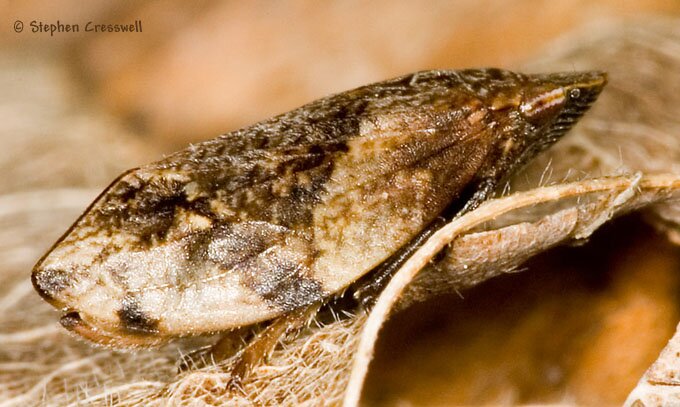
Family: Aphrophoridae
Subfamily: None defined in Aphrophoridae
Length: 6.4-7.6 mm
Lepyronia quadrangularis is a species found in field and meadow. There is one generation per year, with the species overwintering in the egg stage. Springtime is spent in the nymphal instars, while oviposition happens in the fall.
McEvoy (1986) found that older nymphs of Lepyronia quadrangularis usually live "cradled in leaf axils," and that they prefer leaves with a wide axil. The leaf axil reduces "runoff and evaporation of spittle."
Part of McEvoy's study was conducted on Lepyronia quadrangularis living on Pearly Everlasting, one of the natural host plants of this species.

Garman (1923) studied the life history of this insect. He found that adults overwinter, moving to lower, swampy, more protected areas for the winter. In the Spring, females lay eggs in the "rotten and decayed stems of golden rod."
Kathleen Doering (1922) studied the morphology and life history of Lepyronia quadrangularis. She noted that the nymphs of this species sometimes leave their spittlemass and wander over the plant, and may take up residence in the spittlemass of another Lepyronia quadrangularis. She found one mass that contained thirty-one nymphs, ten of them in the third instar, sixteen in the fourth instar, and five in the fifth instar. On another occasion she found a huge spittlemass on Giant Ragweed. The mass was twelve inches long and contained sixty-eight nymphs.
Photos and discussion of the nymphs of Lepyronia quadrangularis.



